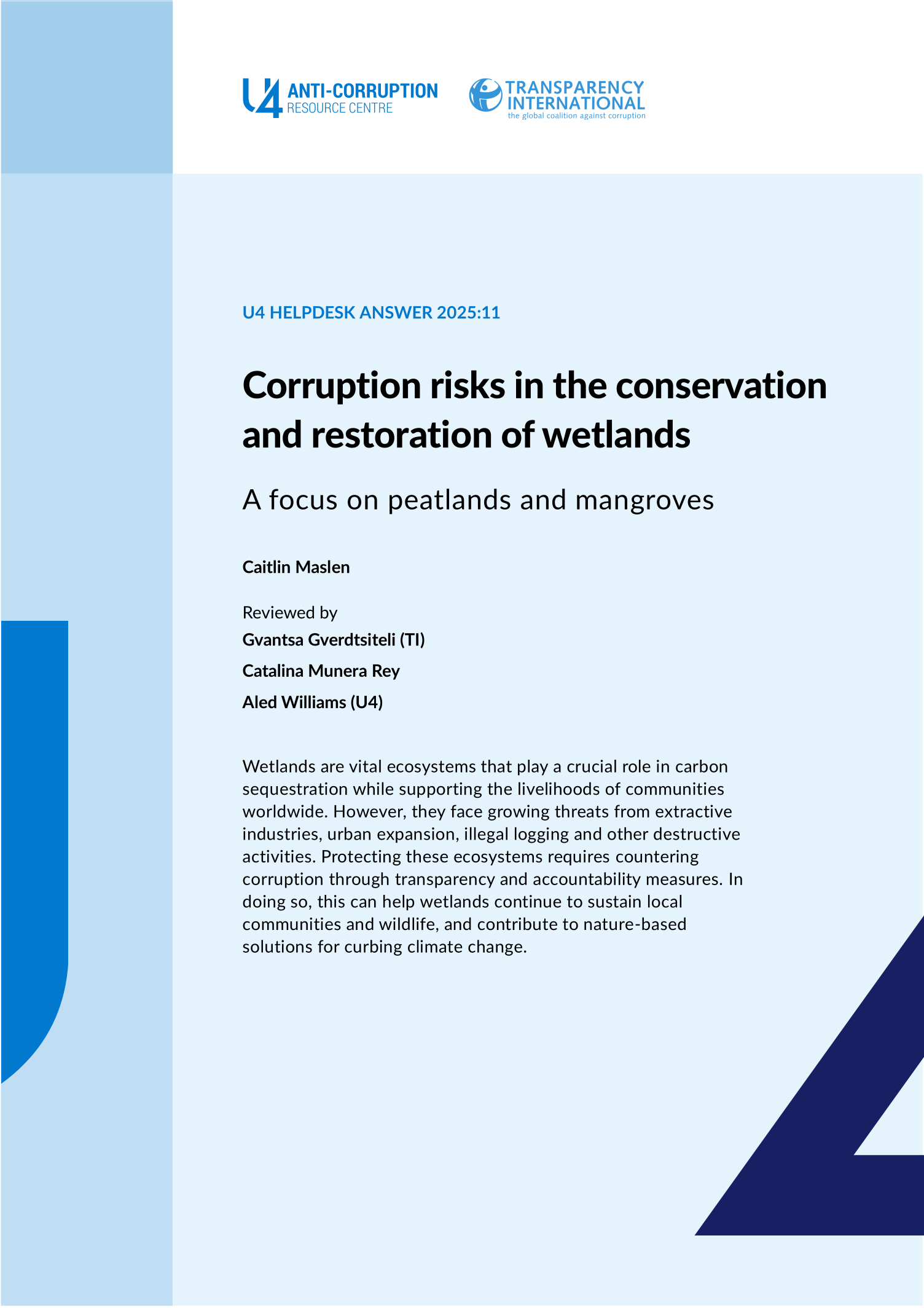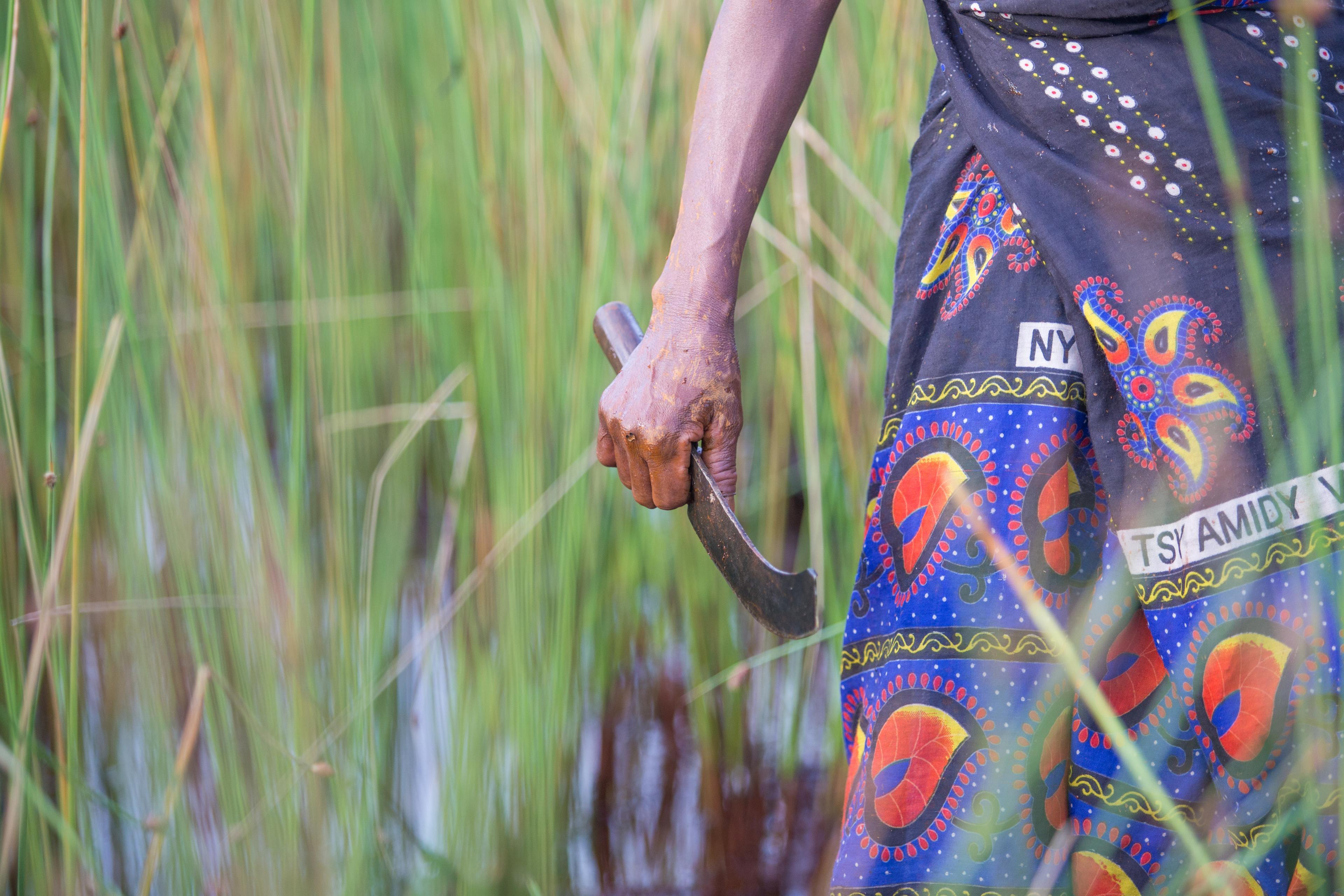Main points
- Wetlands are recognised for their importance in providing a habitat for various species, flood protection and carbon sequestration, where they store carbon at higher rates than other ecosystems. However, their protection and restoration (which is designated under the Ramsar Convention) are undermined by a number of environmental crimes that undermine these protections, including illegal logging, illegal fishing, development of infrastructure and buildings, and others.
- The evidence suggests that these environmental crimes are facilitated by and complemented with corruption. Many studies show that those entrusted with regulating the protection of wetlands use this power to accept bribes and other favours to allow illegal activities to continue operating.
- Insecure land tenure for local communities and land corruption also exacerbates this issue, leading to communities losing rights to their land over the interests of developers and other private companies.
- Corruption in the extractive industries is also well documented, and particularly affects peatland ecosystems, which often have oil beneath the surface. In these cases, financial incentives may be superseded by the protection of ecosystems, as mandated by international and national legislation.
- Mitigation measures include the use of community management and oversight of conservation and restoration projects, allowing local communities to use sustainable practices to ensure these ecosystems thrive.
- Cross-sectoral collaboration between the different responsible entities is also important, with information sharing about each corruption risk necessary for holistic governance of the sector.


